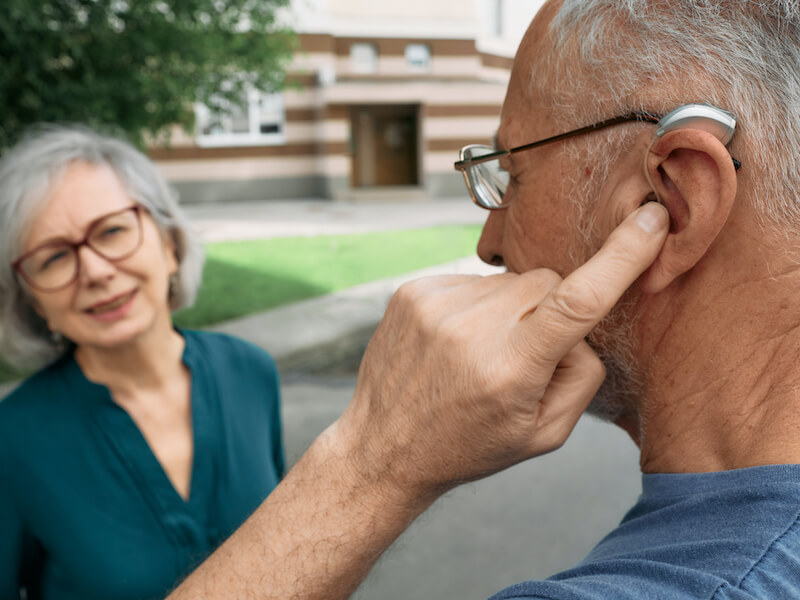
Have you ever been watching your favorite Netflix show when your internet suddenly cuts out? Instead of finding out who won the baking show, you have to watch an endless spinning circle. And so you just wait. Is it your internet provider, modem, router, or maybe it will just come back on its own? It’s not a great feeling.
When technology breaks down, it can be very frustrating. Your hearing aids definitely fall into this category. Most of the time, your hearing aids will give you the means to stay connected to loved ones, have discussions with co-workers, and keep up with your neighbors.
But when they stop working, your hearing loss symptoms can abruptly become much more frustrating. You’ve been disappointed by the technology you count on. How do hearing aids just stop working? So how do you deal with that? Well, there are three prevalent ways that hearing aids can malfunction, here’s how you can start to recognize and troubleshoot those problems.
Three common issues with hearing aids (and some possible solutions)
Even though hearing aids are complex technology, people may experience three common issues with them. Let’s have a look at possible causes of these issues and potential fixes.
Whistling and feedback
Perhaps you suddenly start to hear an awful high-pitched whistling while you’re trying to have a chat with a friend or family member. Or maybe you notice some feedback. You begin to think, “this is strange, what’s up with this whistling”?
Whistling and feedback can be caused by these possible problems:
- You may not have your hearing aids correctly positioned in your ears. Try removing them and putting them back in. You can also try turning the volume down (if this works, you might find some short-term relief, but it also likely means that the fit is indeed not quite right and you should consult us about it).
- Earwax accumulation in your ear canal can compromise how your hearing aid works. This is a fairly common one. Whistling and feedback are often one outcome of this kind of earwax buildup. If possible, you can try clearing some earwax out of your ear or consult with us about the best way to do that (don’t use a cotton swab).
- The tubing that connects the hearing aid with the earmold, on behind-the-ear models, can sometimes become compromised. Take a close look to see if the tube might have separated or might be compromised somehow.
If these issues aren’t easily resolvable, it’s worth consulting with us about correcting the fit or sending your device in for servicing (depending on what we determine the underlying cause of that whistling or feedback may be).
Hearing aids not producing sound
The main goal of hearing aids is to generate sound. That’s their main function! Something has undoubtedly gone wrong if you don’t hear any sound coming out of your hearing aid. So what could cause hearing aids to drop all sound? Well, there are a couple of things:
- Earwax buildup: Yup, earwax strikes again. Have a close look to see if you come across any earwax on the microphone or speakers. You want to make sure the device is good and clean.
- Batteries: Make sure your batteries are fully charged. And even rechargeable batteries should be switched out on occasion.
- Your settings: If you have them, cycle through your personalized settings. It’s possible your hearing devices are not on the right custom setting (so perhaps your hearing aids think you’re in a gymnasium instead of at the kitchen table). This incorrect setting could throw off the sound you’re hearing.
- Power: Everybody forgets to turn their hearing aids on once in a while. Check for this first. Then you can cross that of the list of potential issues.
If these steps don’t address your issues, we may have the solution. Whether repair, maintenance, or replacement is your next step, we will be capable of helping you figure that out.
Painful ears while you’re wearing your hearing aids
Maybe your hearing aids are fine functionally but they hurt when you put them in. And you’re likely thinking: why do my ears hurt when I use my hearing aids? This sort of discomfort isn’t exactly conducive to using your hearing aids on a day-to-day basis. So, what could be causing it?
- Time: Getting used to your hearing aids will take some time. How long it takes will depend on the individual. It’s worth talking about when you buy your hearing aids so you have a realistic idea of how long it may take you to get comfortable with your devices. If uncomfortable ears persist, talk to us about that too!
- Fit: The fit of the device is the most obvious problem. Naturally, when the fit is nice and tight, your hearing aids will work best. Which means that there can occasionally be pain involved in a poor fit. Some hearing aid models can be fit to the distinct shape of your ears. Over the long run, you will have fewer problems if you have a snug fit. We will be able to help you get the best possible fit from your devices.
Take your new hearing aid out for a test ride
One of the best ways to avoid possible problems with hearing aids is to take them out for a bit of a test drive before you decide. In most cases we’ll let you try out a pair of devices before you decide that’s the pair for you.
In fact, we can help you determine the best kind of hearing aid for your needs, adjust the fit to match your ears, and help you handle any extended issues you may have with your devices. In other words, when your devices stop working, you’ll have a resource that can help!
And that’s a lot more than you will get with an over-the-counter hearing aid!